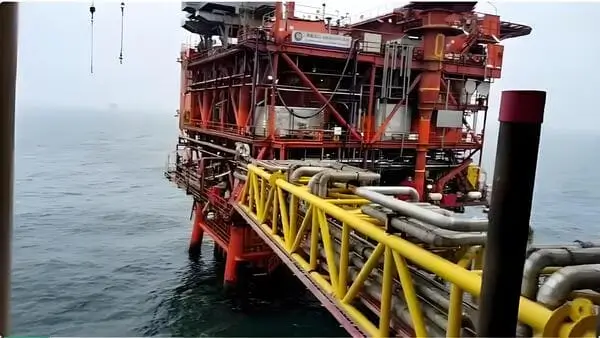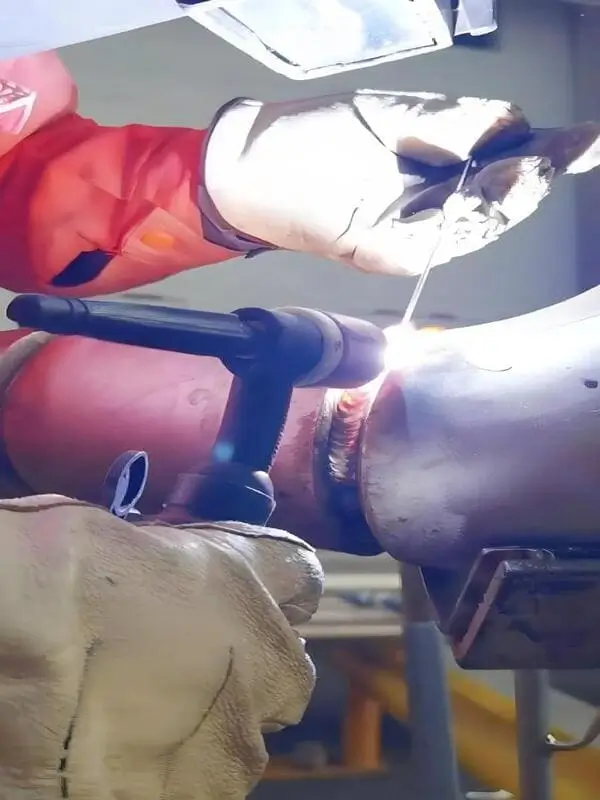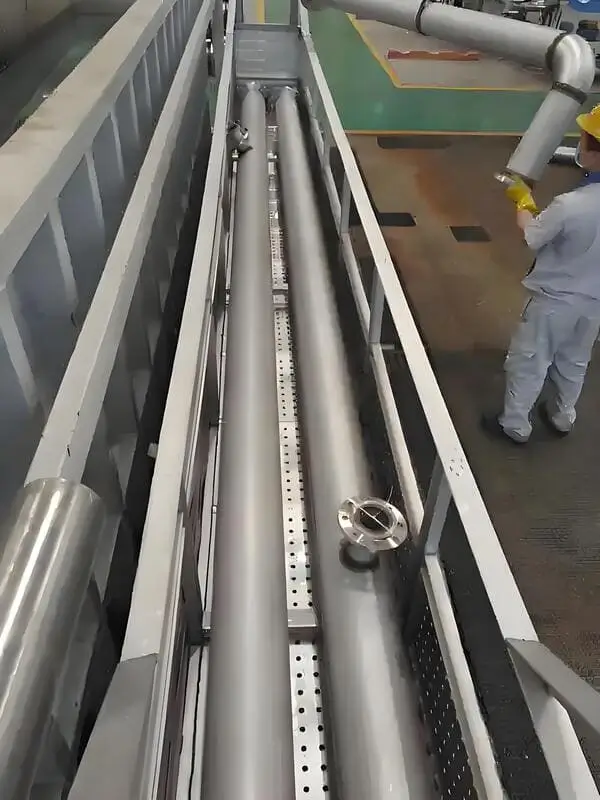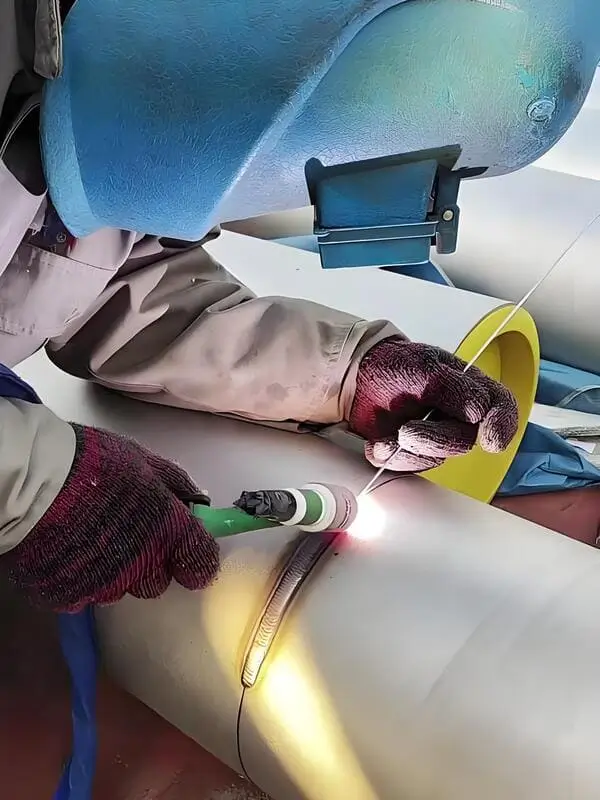1. Introduction to Duplex Stainless Steel Pipes in Marine Environments
The welding of duplex stainless steel pipe in offshore platforms is The specialized fusion joining process, using qualified procedures and matching/compatible filler metals, applied to pipes made of duplex (austenitic-ferritic) stainless steel grades (e.g., UNS S31803, S32205). It aims to construct fluid transportation systems (hydrocarbons, seawater) on offshore structures, maintaining the steel’s essential corrosion resistance (especially against chlorides and SCC) and mechanical properties (strength, toughness) in the harsh marine environment.
The offshore oil and gas industry’s shift toward duplex stainless steel (DSS) pipes represents a technological evolution driven by demanding operational requirements. Grades such as S31803 duplex pipe in offshore platform installations, duplex 2205 stainless steel pipe in offshore platform structures, and their super duplex counterparts (2507 super duplex pipe in offshore platform and S32750 super duplex steel pipe in offshore platform applications) have demonstrated exceptional performance in corrosive marine environments.
These materials combine the advantageous properties of both austenitic and ferritic stainless steels, offering:
- Yield strengths typically ranging from 450-550 MPa
- Pitting Resistance Equivalent Numbers (PREN) between 35-45
- Thermal conductivity approximately 15-20% lower than carbon steels
- Coefficient of thermal expansion similar to mild steel

2. Metallurgical Characteristics of Offshore-Grade Duplex Pipes
2.1 Phase Balance Fundamentals
The optimal microstructure of duplex stainless steels consists of approximately equal proportions of austenite (γ) and ferrite (α) phases. This balanced structure is achieved through:
Table 1: Chemical Composition of Common Offshore Duplex Grades
| Element (%) | S31803 | 2205 | 2507 | S32750 |
|---|---|---|---|---|
| Chromium | 21-23 | 22 | 24-26 | 24-26 |
| Molybdenum | 2.5-3.5 | 3 | 3-4 | 3-4 |
| Nitrogen | 0.08-0.2 | 0.14 | 0.24-0.32 | 0.24-0.35 |
2.2 Critical Temperature Ranges
Welding operations must carefully navigate three crucial temperature zones:
- 475°C Embrittlement Zone: Prolonged exposure causes ferrite phase hardening
- Sigma Phase Formation Range (600-950°C): Particularly problematic for 2507 super duplex pipe in offshore platform welds
- Solution Annealing Range (1020-1100°C): Required for restoring phase balance
3. Welding Process Selection and Optimization
3.1 Recommended Welding Techniques
Table 2: Welding Process Comparison for DSS Pipes
| Process | Heat Input (kJ/mm) | Shielding Gas | Typical Defects |
|---|---|---|---|
| GTAW | 0.8-1.2 | Ar + 2% N₂ | Lack of fusion |
| SMAW | 1.0-1.8 | – | Slag inclusion |
| FCAW | 1.2-1.5 | Ar/CO₂/N₂ | Porosity |
3.2 Consumable Selection Guidelines
For S31803 duplex pipe in offshore platform applications:
- ER2209 filler metals provide optimal phase balance
- ISO 3581-A E2209-17 electrodes for manual welding
- Nitrogen backing gas (minimum 5%) for root protection

4. Practical Welding Considerations
4.1 Heat Input Management
The welding of duplex 2205 stainless steel pipe in offshore platform structures requires precise thermal control:
- Maximum interpass temperature: 150°C
- Cooling rate between 800-500°C: >25°C/second
- Preheat generally not required for thicknesses <20mm
4.2 Post-Weld Treatments
For S32750 super duplex steel pipe in offshore platform critical joints:
- Solution annealing at 1070±10°C followed by rapid quenching
- Local heat treatment using induction coils for field repairs
- Electropolishing to enhance corrosion resistance

5. Quality Assurance and Testing
5.1 Non-Destructive Examination
- Radiographic testing per ASME V Article 2
- Phased array ultrasonic testing (PAUT) for super duplex welds
- Feritscope measurements (acceptance range: 35-65% ferrite)
5.2 Destructive Testing Requirements
Table 3: Mechanical Property Requirements
| Property | S31803 | 2507 | Test Standard |
|---|---|---|---|
| Yield Strength | ≥450MPa | ≥550MPa | ASTM A370 |
| Impact Energy | ≥40J | ≥50J | ISO 148-1 |
| Corrosion Rate | ≤0.1mm/y | ≤0.05mm/y | ASTM G48 |
6. Case Studies from Offshore Installations
6.1 North Sea Gas Export Pipeline
A 28″ diameter S31803 duplex pipe in offshore platform service demonstrated:
- 98% weld success rate using automated GTAW
- Zero failures after 8 years of operation
- Cost savings of 22% compared to nickel alloy alternatives
6.2 Gulf of Mexico Subsea Manifold
The use of 2507 super duplex pipe in offshore platform high-pressure applications showed:
- 40% weight reduction versus carbon steel with corrosion allowance
- Welding defect rate reduced to 1.2% using laser-assisted FCAW
- Successful operation at 345 bar working pressure
7. Emerging Technologies and Future Trends
7.1 Advanced Welding Processes
Hybrid Laser-Arc Welding:
- 50% faster than conventional GTAW
- 30% narrower heat-affected zone
Friction Stir Welding:
- No melting → minimal phase imbalance
- Particularly suitable for S32750 super duplex steel pipe in offshore platform thick sections
7.2 Smart Welding Systems
- Real-time phase balance monitoring using optical emission spectroscopy
- AI-driven parameter optimization for duplex 2205 stainless steel pipe in offshore platform fabrication
8. Conclusion
The welding of duplex stainless steel pipe in offshore platform applications requires specialized knowledge of metallurgical behavior and precise process control. Key recommendations include:
- For S31803 duplex pipe: Maintain heat input below 1.5 kJ/mm and use nitrogen-enhanced shielding gases
- For 2507 super duplex pipe applications: Implement strict interpass temperature control and solution anneal critical welds
- Always verify phase balance through Feritscope measurements and corrosion testing
As offshore operations move into deeper waters and more aggressive environments, the proper welding of duplex stainless steels will remain critical for ensuring long-term structural integrity and safety.

